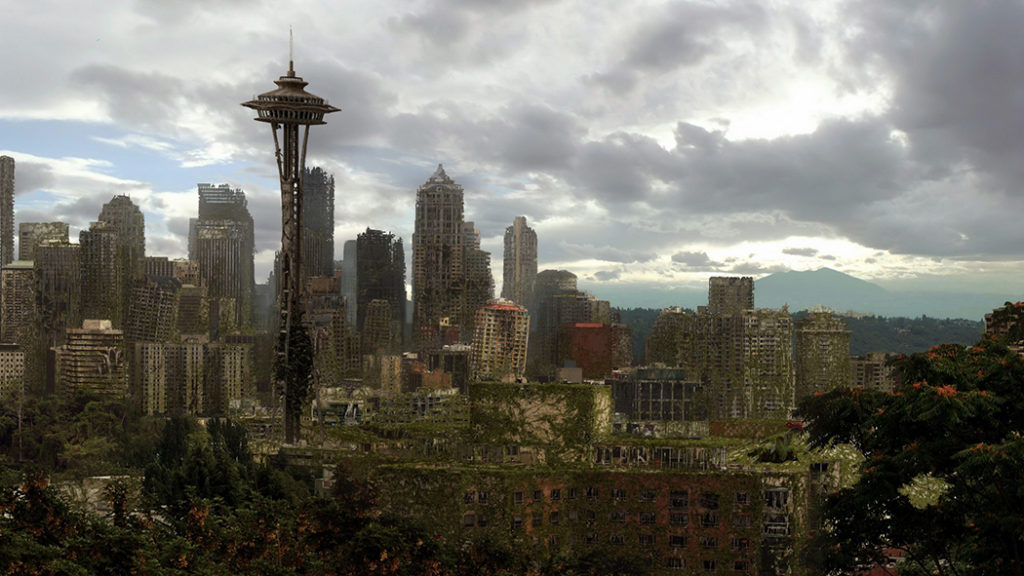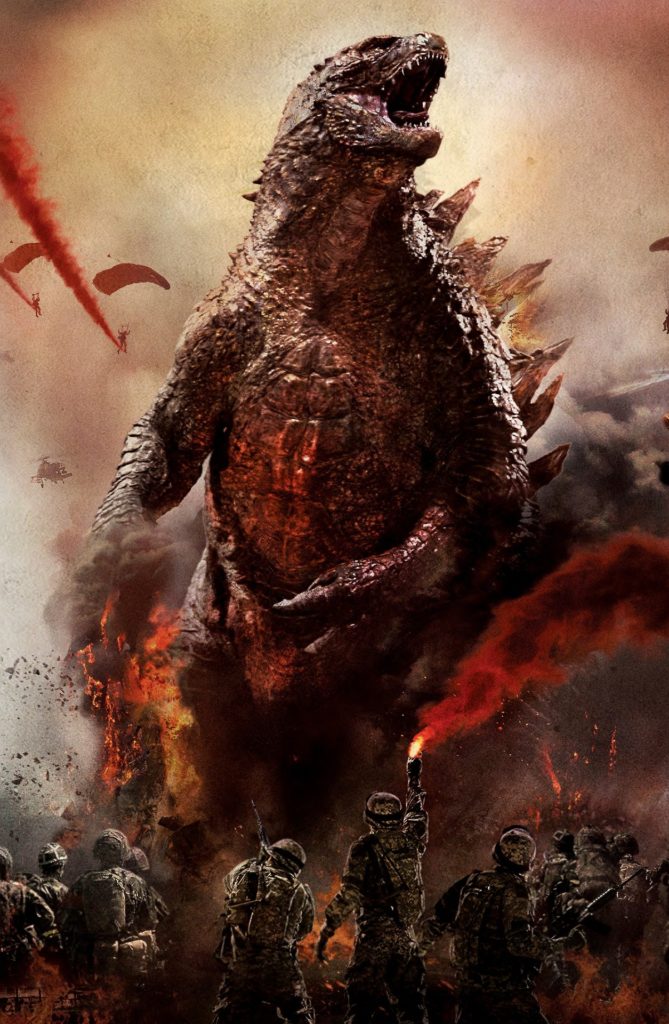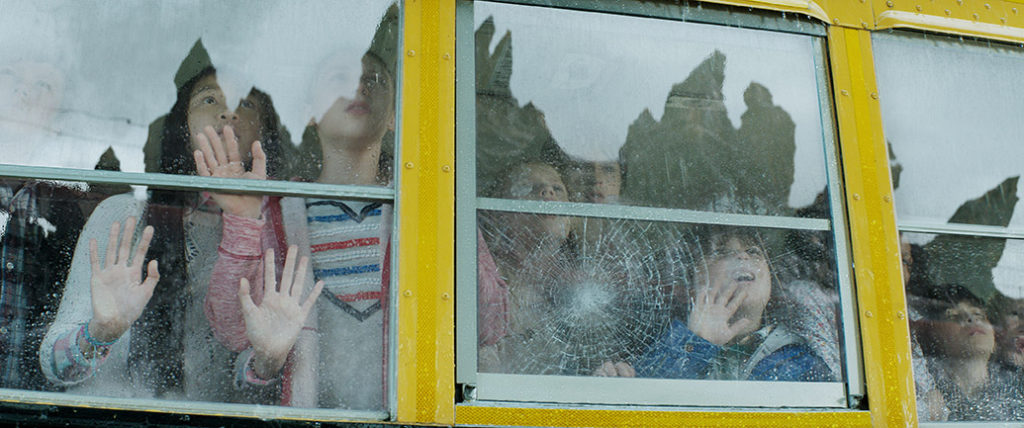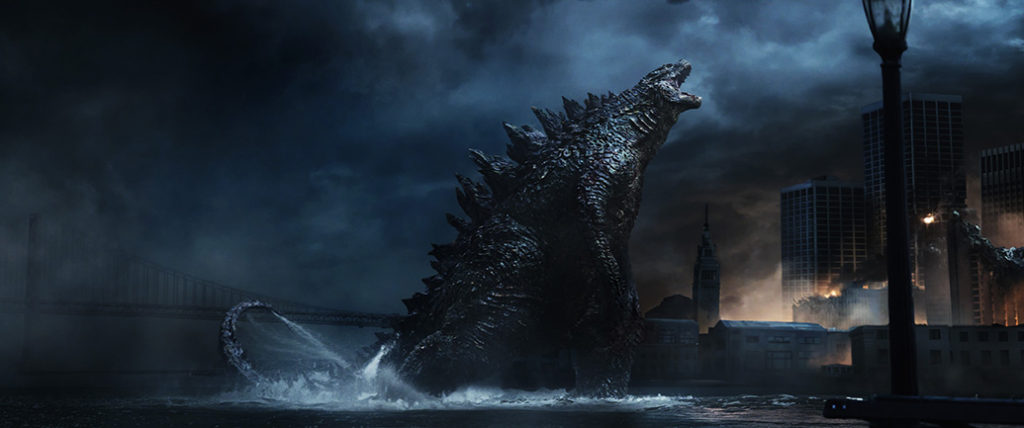Part I: Creation Regained
“The arrogance of man is thinking nature is in their control, and not the other way around.”
–Dr. Ichiro Serizawa (Ken Watanabe) in Godzilla (2014)
This article contains spoilers for 2014’s GODZILLA.
I once saw a two-hour special on The History Channel called Life After People[1]. It showed what could plausibly happen to the Earth if all human beings suddenly and inexplicably vanished without a trace. While some might find such a concept existentially horrifying, I was actually very encouraged, because it demonstrated that within a mere handful of centuries—a nanosecond on a geological timescale—all evidence of mankind could be completely re-absorbed by nature, as if we never existed at all. As a Christian, I took the message to heart that no matter how much we damage God’s creation; no matter how much we raise the temperature of the Earth; how much we acidify the oceans, or pollute the air, or melt the polar ice caps—the universe He made is capable of recovering.

This is an important part of a sound eschatology[2]. As sinful human beings, we have done devastating damage to the environment, sometimes even to seemingly irreparable levels. We’ve wiped out countless species of plants and animals, and we’ve just discovered that thanks to global warming, the West Antarctic ice sheet is now melting away entirely, significantly raising global sea levels, and is too late for us to fix it. Our sins have wounded Creation (Genesis 3) and caused it to groan (Romans 8:20) under the weight of them.
But the good news is that Christ’s sacrifice on the cross was not only to redeem His people, but to redeem the entirety of His creation. Adam (and by extension, the rest of humanity) has failed to take proper care of what God has given us. But now Jesus, the Second Adam, has taken back His place as the Covenant Head of His Creation, and He will restore and renew it to its former glory and beyond[3].

This is a prominent theme in Gareth Edwards’ new Godzilla film—summed up in the above quote from Dr. Serizawa. Despite all the doom and gloom promised in the trailers, the movie actually offers a very optimistic message of Creation regained. Our sins against the planet may be grievous, but there is hope that they can be undone. That’s where Godzilla comes in—he’s here to set things right and to reverse the damage we did. Nature—and by extension, the God who created it—is bigger than us, and shall never be conquered by us, despite our illusion of its domination. In the film, Drs. Serizawa and Vivian Graham (Sally Hawkins) are the voices of truth and reason. As true believers, they know what no one else in the film does—that Godzilla has come not to destroy us, but to restore balance to nature—a balance that mankind has upset. He is, in fact, a force of nature—not for destruction, like an earthquake or a hurricane, but for restoration. He’s like a physical manifestation of the protective spirit of Mother Earth.

Drs. Ichiro Serizawa (Ken Watanabe) and Vivienne Graham (Sally Hawkins)
Dr. Hawkins first puts the “god” in “Godzilla” when she tells us that as the alpha predator at the top of a primordial ecosystem, he is essentially “a god, for all intents and purposes.” As an ancient god (practically a “Great Old One,” to use a Lovecraftian parlance), Godzilla may be somewhat disinterested in us (his sheer massiveness means that it is critically unsafe to be anywhere near him), but he’s not a vengeful god, either. He’s not here to castigate us or to destroy us—he never intentionally hurts anyone, and he doesn’t even retaliate when we fire missiles at him. Rather than punishing us for our foolishness, or even leaving us to our own devices, Godzilla actually cleans up our mess and gives us another chance to get things right. And he’s willing to do anything to get the job done—even if it might mean sacrificing himself to do so.
 Sound familiar? Godzilla has a lot going on in the Echoes of Eden department. While I wouldn’t call Godzilla a Christ figure, he certainly reflects aspects of Christ’s story of redemption, in a similar way that Odin’s sacrifice on Yggdrasil in Norse mythology is reflective of Christ’s sacrifice on the cross. Just as Christ promises to redeem His creation, Godzilla shows up to save us from the damage we have done to the planet and to ourselves, causing the MUTO’s to become unleashed. There’s even a moment when it appears that he has died while defeating the rival monsters. In other words, from a dramatic narrative and thematic standpoint, Godzilla essentially dies for our sins.
Sound familiar? Godzilla has a lot going on in the Echoes of Eden department. While I wouldn’t call Godzilla a Christ figure, he certainly reflects aspects of Christ’s story of redemption, in a similar way that Odin’s sacrifice on Yggdrasil in Norse mythology is reflective of Christ’s sacrifice on the cross. Just as Christ promises to redeem His creation, Godzilla shows up to save us from the damage we have done to the planet and to ourselves, causing the MUTO’s to become unleashed. There’s even a moment when it appears that he has died while defeating the rival monsters. In other words, from a dramatic narrative and thematic standpoint, Godzilla essentially dies for our sins.
But then, when the dawn breaks, in a beautifully quiet moment, Godzilla experiences something of a resurrection, returning to life as he comes face to face with Dr. Serizawa, whose admiration for the ancient being borders on worship. As Godzilla returns to the sea, the people of San Francisco declare him the savior of their city. Like King Arthur (another messianic literary figure), Godzilla departs across the sea, where he will stay until he is needed again; a reflection—a dim reflection, but a reflection nonetheless—of Christ’s ascension into Heaven to sit at the right hand of God the Father (Mark 16:19, Luke 24:50-53); part of a tapestry of the elements of God’s redemptive-historical narrative that are woven into the fabric of Godzilla.
Part II: Leviathan Redeemed

When I was a child, I was obsessed with monsters. I first developed a love for Japanese Kaiju films when I came down with the chicken pox in first grade. Stuck at home for a week, my father rented a stack of Toho movies on VHS—Godzilla, Rodan, Mothra, King Ghidorah…I devoured them all as I lay on the couch covered in itchy spots. Kaiju was my first fandom—even before Star Trek. And as long as I can remember, I’ve loved monsters—from the very real dinosaurs of prehistoric times to the flying, fire-breathing dragons of fantasy. And so it’s no surprise that as a child, my favourite passage of the Bible was Job 41:
41 [a]“Can you pull in Leviathan with a fishhook
or tie down its tongue with a rope?
2 Can you put a cord through its nose
or pierce its jaw with a hook?
3 Will it keep begging you for mercy?
Will it speak to you with gentle words?
4 Will it make an agreement with you
for you to take it as your slave for life?
5 Can you make a pet of it like a bird
or put it on a leash for the young women in your house?
6 Will traders barter for it?
Will they divide it up among the merchants?
7 Can you fill its hide with harpoons
or its head with fishing spears?
8 If you lay a hand on it,
you will remember the struggle and never do it again!
9 Any hope of subduing it is false;
the mere sight of it is overpowering.
10 No one is fierce enough to rouse it.
Who then is able to stand against me?
11 Who has a claim against me that I must pay?
Everything under heaven belongs to me.
12 “I will not fail to speak of Leviathan’s limbs,
its strength and its graceful form.
13 Who can strip off its outer coat?
Who can penetrate its double coat of armor[b]?
14 Who dares open the doors of its mouth,
ringed about with fearsome teeth?
15 Its back has[c] rows of shields
tightly sealed together;
16 each is so close to the next
that no air can pass between.
17 They are joined fast to one another;
they cling together and cannot be parted.
18 Its snorting throws out flashes of light;
its eyes are like the rays of dawn.
19 Flames stream from its mouth;
sparks of fire shoot out.
20 Smoke pours from its nostrils
as from a boiling pot over burning reeds.
21 Its breath sets coals ablaze,
and flames dart from its mouth.
22 Strength resides in its neck;
dismay goes before it.
23 The folds of its flesh are tightly joined;
they are firm and immovable.
24 Its chest is hard as rock,
hard as a lower millstone.
25 When it rises up, the mighty are terrified;
they retreat before its thrashing.
26 The sword that reaches it has no effect,
nor does the spear or the dart or the javelin.
27 Iron it treats like straw
and bronze like rotten wood.
28 Arrows do not make it flee;
slingstones are like chaff to it.
29 A club seems to it but a piece of straw;
it laughs at the rattling of the lance.
30 Its undersides are jagged potsherds,
leaving a trail in the mud like a threshing sledge.
31 It makes the depths churn like a boiling caldron
and stirs up the sea like a pot of ointment.
32 It leaves a glistening wake behind it;
one would think the deep had white hair.
33 Nothing on earth is its equal—
a creature without fear.
34 It looks down on all that are haughty;
it is king over all that are proud.”
–Job 41 (New International Version)
As a child raised in the Young-Earth Creationist tradition[4], I was convinced that this passage described a very real type of fire-breathing dragon that existed during Job’s time, and might still exist today in the ocean somewhere. But despite my lifelong love of Godzilla, it never occurred to me how much he resembles the mythical Leviathan. Skin like armour that no weapon can penetrate; a back that looks like a row of shields; the ability to breathe fire; a home deep in the boiling depths of the sea. I’m hard pressed to think of any modern pop culture legend that resembles Leviathan more than Godzilla does. The latest incarnation of Godzilla in Gareth Edwards’ new film is even more like that fearsome legendary creature—seemingly millions of years old, possessed of an apparent immortality that is reminiscent of descriptions of Leviathan in the Jewish midrash, which holds that it is the only one of its kind; an ageless monster of the deep.

Leviathan has its origins in Ancient Near Eastern mythology, and was in fact considered the Babylonian god of the sea, and of chaos. But throughout the Old Testament, Yahweh continually demonstrates that the gods of the surrounding nations are no match for the One True God of the Hebrews. He toppled the gods of ancient Egypt (the reigning regional superpower of the day) in the prelude to the Hebrew Exodus. And in Psalm 74, He promises His people that He will “break the heads of Leviathan in pieces.” When the Spirit of the Lord moves over the waters in Genesis 1, the context of this passage is that God is victorious over the chaos of Leviathan.
But Job 41 and Psalm 104 categorize Leviathan as just another one of God’s creatures. Job 41 lists all the various ways in which Leviathan is one of the strongest and most powerful of any created entity, and yet he pales in comparison to God. Just like everything else in the Creators dominion, Leviathan ultimately serves God’s purposes.
This is the image that Godzilla conjures forth: Leviathan turned to the purposes of God. No longer the god of chaos, he comes to restore order and balance to nature. In 1954, Gojira was a force of destruction created in the wake of nuclear horror. But now he works towards restoration instead—restoring the balance of nature; undoing the damage we have done to God’s Creation. He is an agent working towards Creation regained.
[1] Which was subsequently adapted into an ongoing television programme
[2] Meaning apocalyptic theology
[3] See the Covenant Promise God makes to Noah in Genesis 9:8-17. For other Biblical passages about God’s commitment to restoring His creation, see also: Matthew 19:28, Mark 14:61-62, Luke 24:36-43, John 1:51, Acts 3:21, Romans 8:19-22, Colossians 1:20, James 1:18, and Revelation 20-22. I would also highly recommend the book: Far as the Curse is Found, by Michael D. Williams, which offers excellent commentary on these verses and many more having to do with God’s redemption of His Creation.
I should also like to stress here that this by no means lets us off of the hook. Just because Jesus is committed to cleaning up our mess doesn’t mean that we should keep making the mess worse—just as Paul says in Romans 6:2 that we should not go on sinning in order that Grace may increase. Rather, we should work with the Spirit of the Lord in the renewal of His creation right now, doing everything we can to push against the effects of the Fall that mankind hath wrought upon God’s creation (Matthew 6:33). This is an essential and indispensable part of our calling as children of God. As Dr. Williams says in his book: “Far from entailing a disdain for the creaturely realm, saying yes to Christ entails, not a rejection of creation but a rejection of sin and a deeply religious affirmation of the things of God. Our God-given calling includes reflecting God’s self-sacrificial, redemptive concern for a sin-scarred world. The Bible’s word about the eschaton offers us no excuse for an otherworldly retreat from this calling but rather summons the people of God to watchfulness and work. The biblical vision of the future does not negate our present existence but rather it enlightens and challenges our lives within God’s creation.” (Michael D. Williams, Far as the Curse is Found [New Jersey: P&R Publishing, 2004], 295-296.)
[4] I.E., the belief that the Earth is between 6,000 and 10,000 years old, and that the creation account of Genesis 1 is meant to be taken word-for-word as literal. This theology has been made most famous by Ken Ham and his Answers in Genesis organization. While I have no wish to offend those of our readers who may subscribe to such a view, I would be remiss as a theologian if I did not point out that not only does this perspective fly in the face of a preponderance of scientific evidence, but perhaps more importantly (from a theological perspective), it is a result of a woefully faulty Old Testament hermeneutic that fails to take into account the relationship between history and myth in the Ancient Near East (they were essentially one and the same), an ignorance of ancient literary genres, and a fundamental misunderstanding of Hebraic genealogical records, along with many other mistaken assumptions that come from reading Scripture through a post-enlightenment, hyper-rationalistic, 20thcentury Western grid, instead of reading it in the context of the audience for whom it was originally written.
At the same time, however, I think there is something wonderful in the innocence of a child who wants to believe in magical creatures. I’m reminded of J.R.R. Tolkien, who said of his childhood imagination, “I desired dragons with a profound desire. Of course, I in my timid body did not wish to have them in the neighborhood. But the world that contained even the imagination of Fáfnir was richer and more beautiful, at whatever the cost of peril.”

